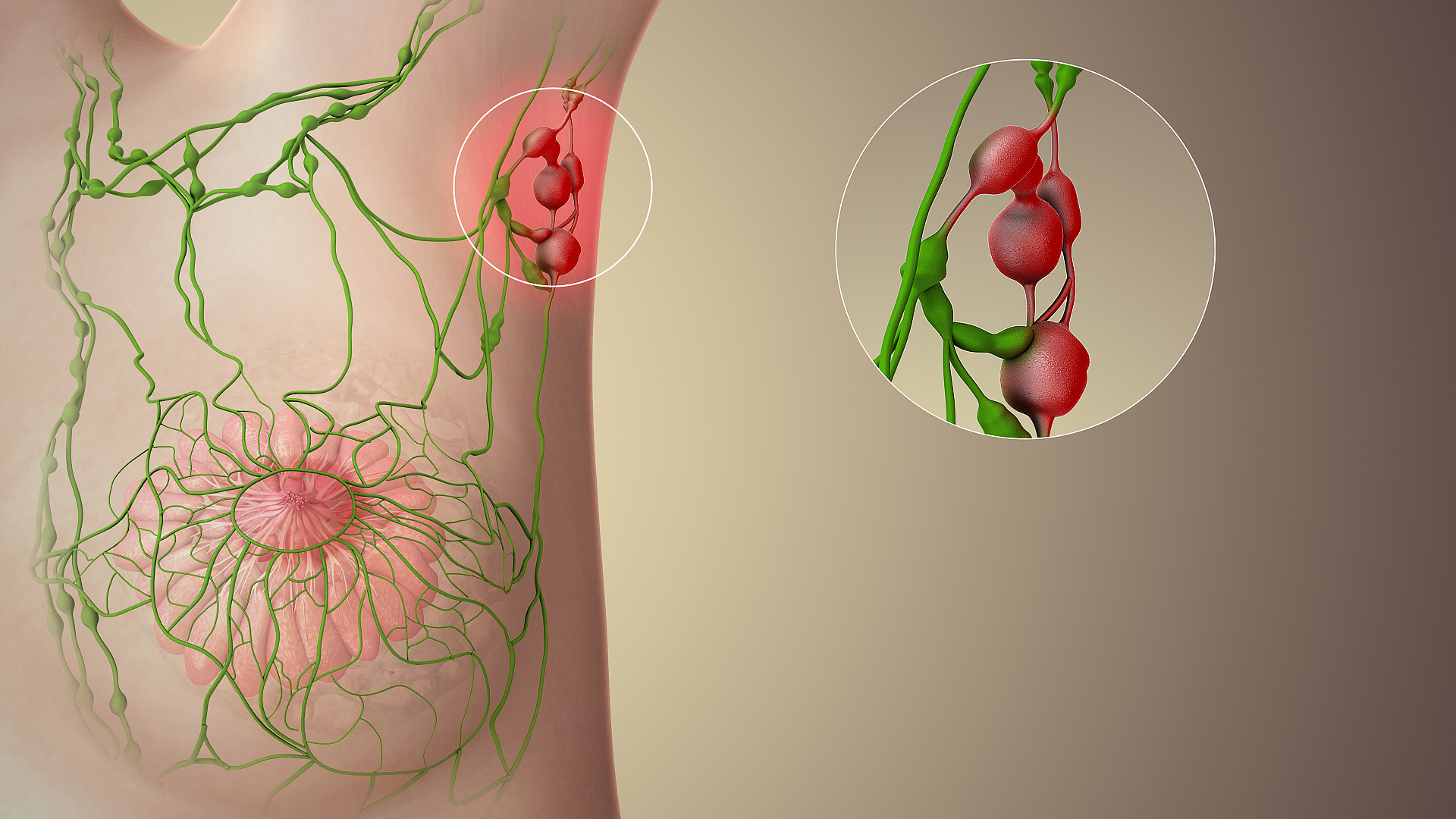Swelling in lymph nodes underarm. Swollen Lymph Nodes in Armpit: Causes, Symptoms, and Effective Treatments
What are the common causes of swollen lymph nodes in the armpit. How can you identify the symptoms of swollen lymph nodes. What are the most effective treatments for swollen lymph nodes in the armpit. When should you seek medical attention for swollen lymph nodes.
Understanding Lymph Nodes and Their Function
Lymph nodes play a crucial role in our body’s immune system. These small, bean-shaped structures are part of a complex network that helps fight infections and remove harmful substances from our body. But what exactly do lymph nodes do, and why do they sometimes swell?
Lymph nodes filter lymph, a clear, colorless fluid that contains white blood cells. These white blood cells are essential for combating infections and diseases. When our body detects a threat, such as a bacterial or viral infection, the lymph nodes in the affected area may enlarge as they work harder to filter out harmful cells.
While swollen lymph nodes can occur in various parts of the body, they are most noticeable in the neck, armpits, and groin. In this article, we’ll focus on swollen lymph nodes in the armpit, exploring their causes, symptoms, and treatment options.

Common Causes of Swollen Lymph Nodes in the Armpit
Swollen lymph nodes in the armpit can be attributed to various factors, ranging from minor infections to more serious health conditions. Understanding these causes can help you determine when to seek medical attention. Here are some of the most common reasons for swollen lymph nodes in the armpit:
Viral Infections
Many viral infections can cause lymph nodes to swell, including:
- Varicella-zoster virus (chickenpox)
- Measles
- Mumps
- Rubella
- HIV
- Influenza (flu)
- Infectious mononucleosis (mono)
These infections often produce other symptoms alongside swollen lymph nodes, such as rashes, fever, or fatigue.
Bacterial Infections
Bacterial infections can also lead to swollen lymph nodes in the armpit. Some examples include:
- Cellulitis
- Lyme disease
- Chlamydia
- Syphilis
- Tuberculosis
While some of these infections primarily affect lymph nodes in other areas of the body, they can sometimes cause swelling in the armpit region as well.
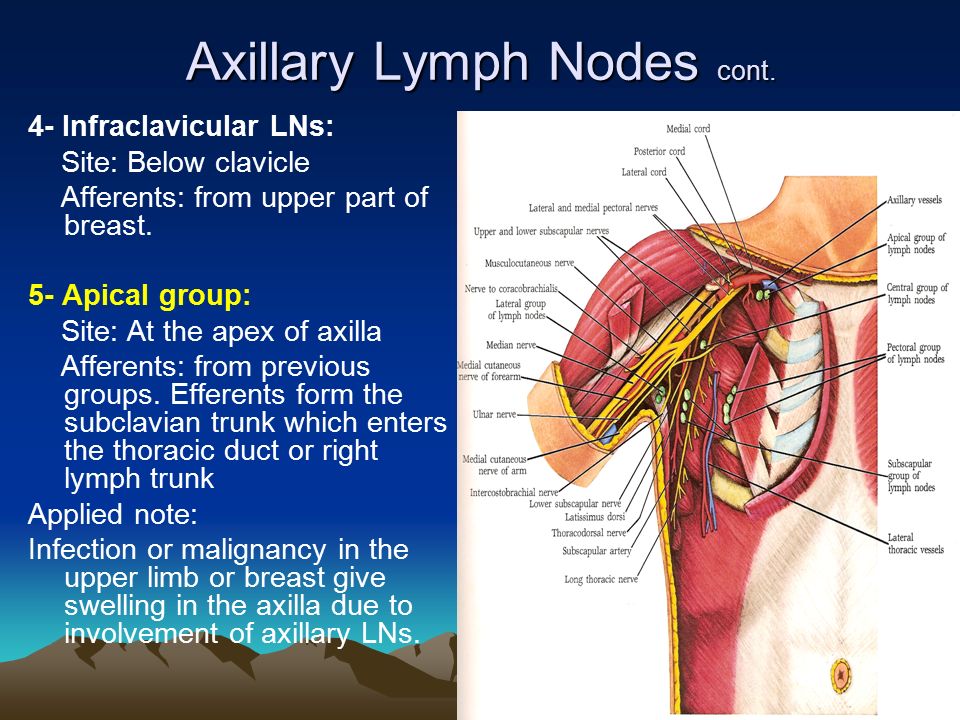
Injuries and Skin Conditions
Sometimes, injuries or skin conditions near the armpit can cause the lymph nodes in that area to swell. This can include:
- Cuts or scrapes on the arm or hand
- Insect bites
- Severe sunburn
- Eczema or other inflammatory skin conditions
More Serious Conditions
In some cases, swollen lymph nodes in the armpit may be a sign of a more serious condition, such as:
- Lymphoma (cancer of the lymphatic system)
- Breast cancer
- Leukemia
- Autoimmune disorders
While these conditions are less common causes of swollen lymph nodes, it’s important to be aware of them and seek medical attention if you have persistent swelling or other concerning symptoms.
Recognizing Symptoms of Swollen Lymph Nodes in the Armpit
Identifying swollen lymph nodes in the armpit is crucial for determining whether you need medical attention. Here are some key symptoms to look out for:
- A lump or swelling under the arm
- Pain or tenderness when touching the area
- Redness or warmth around the swollen area
- A feeling of fullness or discomfort in the armpit
- Difficulty moving the arm or shoulder
In some cases, swollen lymph nodes may be accompanied by other symptoms, depending on the underlying cause. These can include:

- Fever or chills
- Fatigue
- Night sweats
- Unexplained weight loss
- Skin rashes or infections
Are swollen lymph nodes always visible? Not necessarily. In some cases, the swollen nodes may be small or located deeper in the body, making them difficult to see. However, you may still be able to feel them when touching the area.
Diagnosing the Cause of Swollen Lymph Nodes
If you’re experiencing persistent swollen lymph nodes in your armpit, it’s important to consult a healthcare professional for proper diagnosis. The diagnostic process may involve:
Physical Examination
Your doctor will likely start with a thorough physical examination, feeling the affected area to assess the size, texture, and tenderness of the swollen lymph nodes. They may also check for swelling in other areas of your body.
Medical History
Your doctor will ask about your symptoms, how long you’ve had them, and any other relevant medical information. This can help them identify potential causes of the swelling.
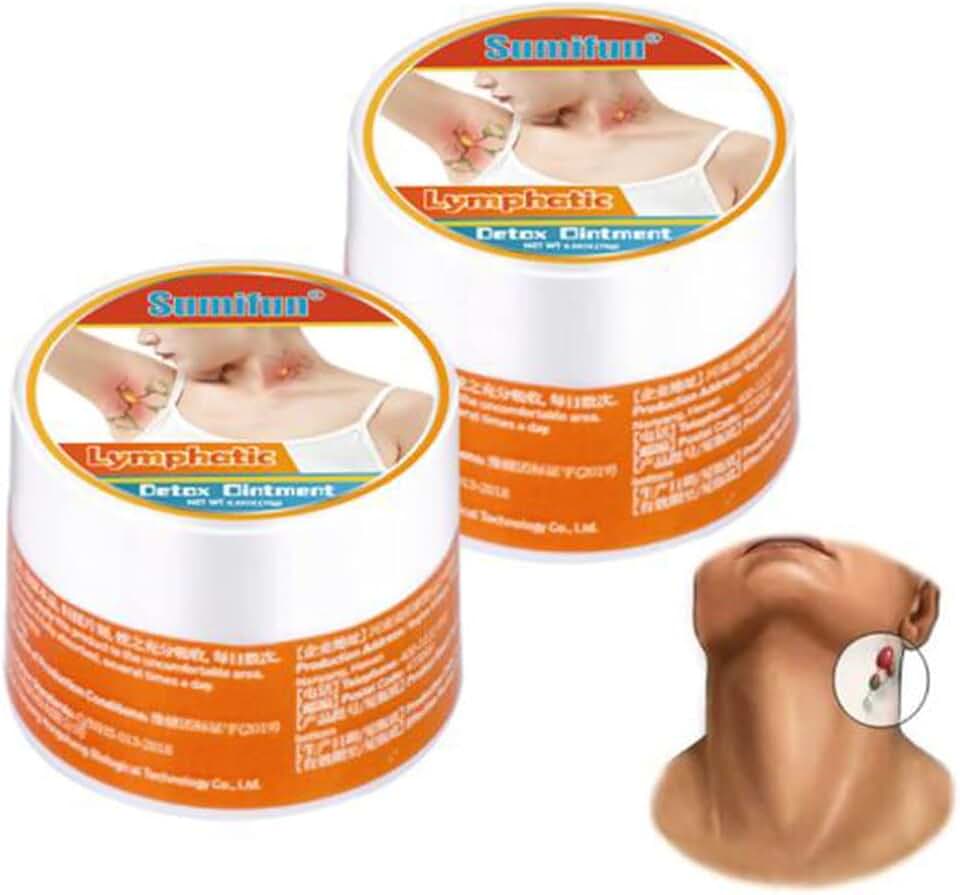
Blood Tests
Blood tests can help detect infections, immune system disorders, or other conditions that might be causing your lymph nodes to swell.
Imaging Tests
In some cases, your doctor may recommend imaging tests such as:
- Ultrasound
- CT scan
- MRI
These tests can provide detailed images of the lymph nodes and surrounding tissues, helping to identify any abnormalities.
Biopsy
If your doctor suspects a more serious condition, they may recommend a biopsy. This involves removing a small sample of tissue from the swollen lymph node for laboratory analysis.
Treatment Options for Swollen Lymph Nodes in the Armpit
The treatment for swollen lymph nodes in the armpit depends on the underlying cause. Here are some common approaches:
Wait-and-See Approach
In many cases, especially when the swelling is due to a minor infection, your doctor may recommend a wait-and-see approach. The swelling often subsides on its own as your body fights off the infection.
Treating the Underlying Condition
If a specific infection or condition is identified as the cause, treatment will focus on addressing that issue. For example:

- Bacterial infections may be treated with antibiotics
- Viral infections often require rest and supportive care
- Skin conditions may be treated with topical medications or other therapies
Pain Relief and Comfort Measures
To manage discomfort associated with swollen lymph nodes, you can try:
- Applying warm compresses to the affected area
- Taking over-the-counter pain relievers like ibuprofen or acetaminophen
- Getting plenty of rest to support your body’s healing process
More Intensive Treatments
For more serious conditions, such as cancer or autoimmune disorders, treatment may involve:
- Chemotherapy
- Radiation therapy
- Immunotherapy
- Surgical removal of affected lymph nodes
The specific treatment plan will depend on the diagnosis and severity of the condition.
When to Seek Medical Attention for Swollen Lymph Nodes
While swollen lymph nodes are often harmless and resolve on their own, there are situations where medical attention is necessary. You should consult a healthcare professional if:
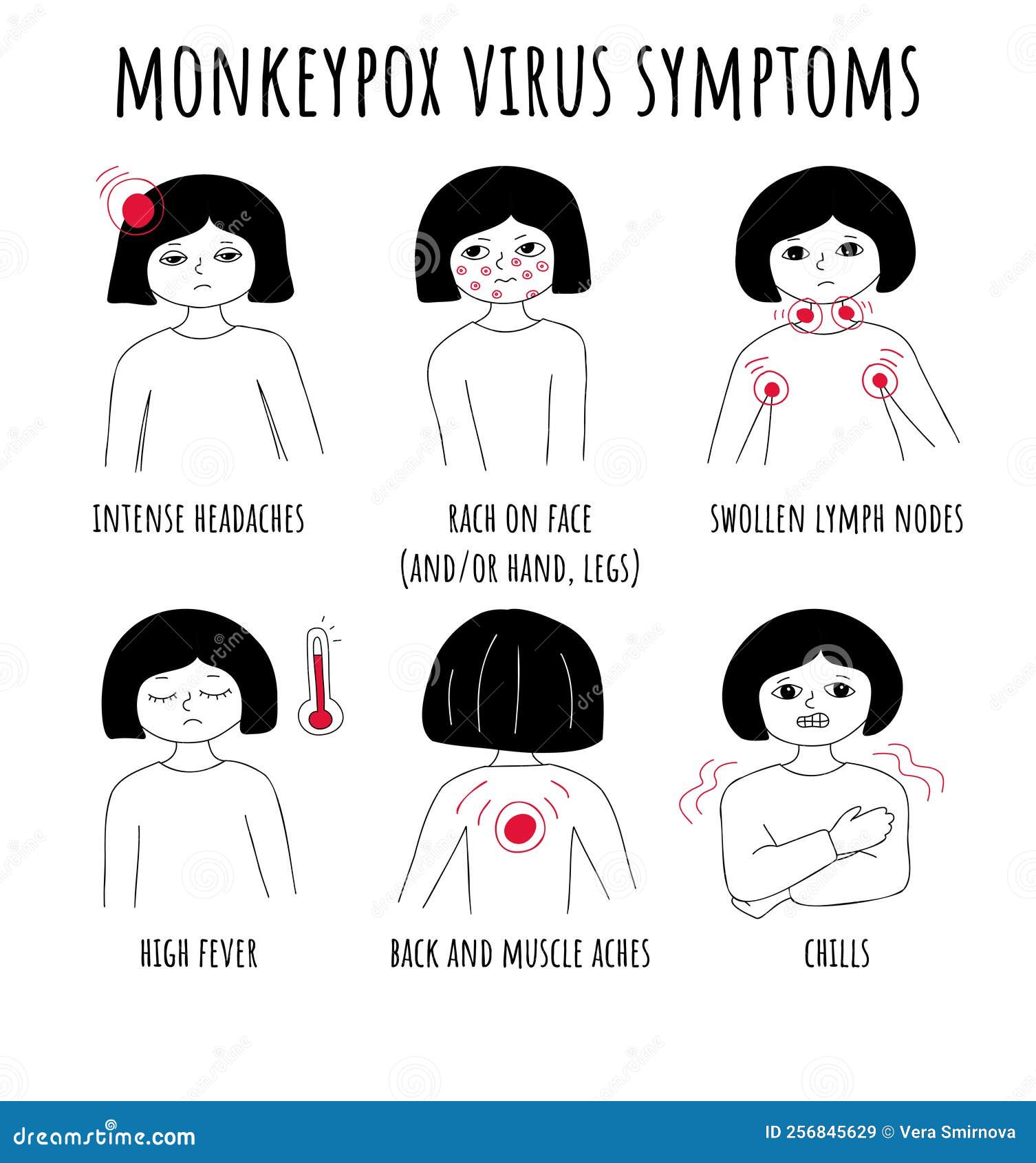
- The swelling persists for more than two weeks
- The lymph nodes continue to enlarge or become painful
- You experience unexplained weight loss, fever, or night sweats
- The swollen area becomes red, hard, or feels hot to the touch
- You have difficulty moving your arm or shoulder
- You have a history of cancer or are at high risk for cancer
These symptoms may indicate a more serious underlying condition that requires prompt medical evaluation and treatment.
Preventing Swollen Lymph Nodes in the Armpit
While it’s not always possible to prevent swollen lymph nodes, there are steps you can take to reduce your risk:
Maintain Good Hygiene
Proper hygiene can help prevent infections that may lead to swollen lymph nodes. This includes:
- Washing your hands regularly
- Keeping cuts and scrapes clean and covered
- Practicing good oral hygiene
Boost Your Immune System
A strong immune system can help fight off infections that may cause swollen lymph nodes. To support your immune health:
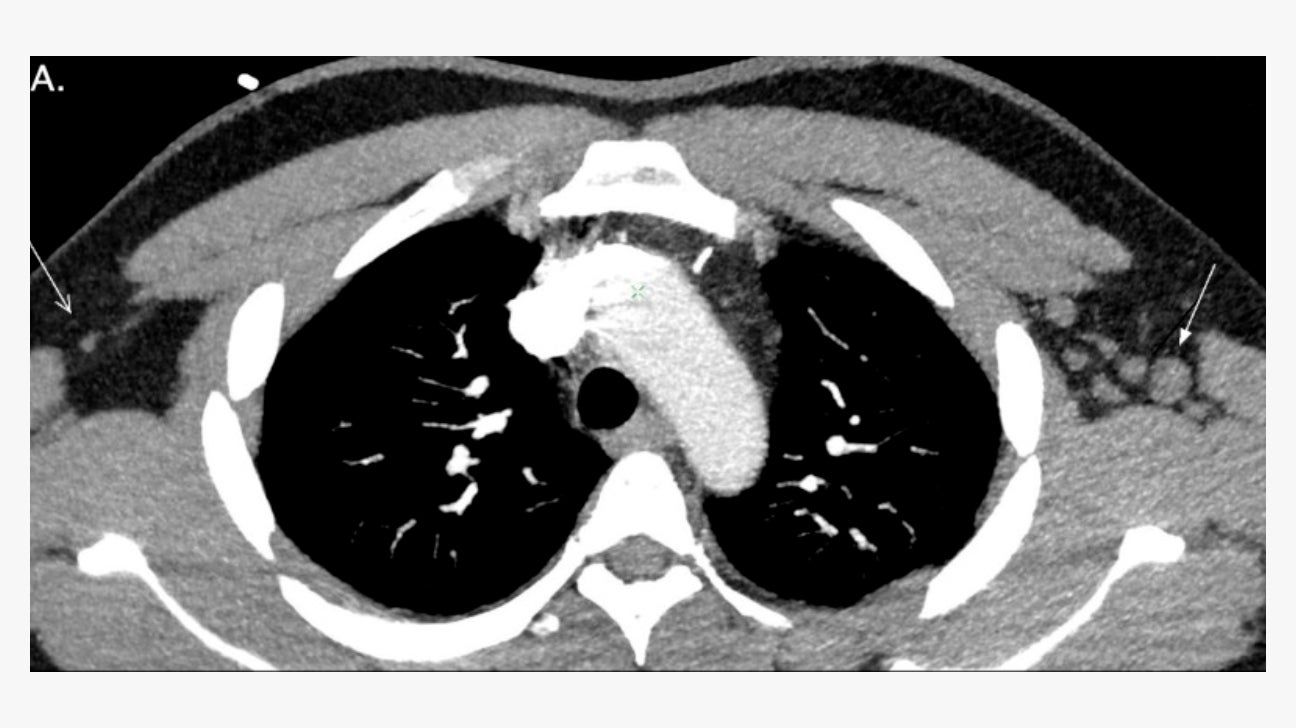
- Eat a balanced diet rich in fruits, vegetables, and whole grains
- Get regular exercise
- Get enough sleep
- Manage stress through relaxation techniques or meditation
Stay Up-to-Date on Vaccinations
Vaccines can protect you from many infections that can cause swollen lymph nodes. Make sure you’re up-to-date on recommended vaccinations, including:
- Flu shot
- MMR (measles, mumps, rubella) vaccine
- Chickenpox vaccine
Avoid Exposure to Harmful Substances
Certain substances can irritate your lymphatic system and potentially lead to swollen lymph nodes. To minimize this risk:
- Avoid tobacco smoke
- Limit alcohol consumption
- Be cautious when using harsh chemicals or irritants
Living with Swollen Lymph Nodes: Coping Strategies and Support
Dealing with swollen lymph nodes can be uncomfortable and sometimes worrying. Here are some strategies to help you cope:
Stay Informed
Understanding your condition can help reduce anxiety and empower you to make informed decisions about your health. Don’t hesitate to ask your healthcare provider questions about your diagnosis and treatment options.
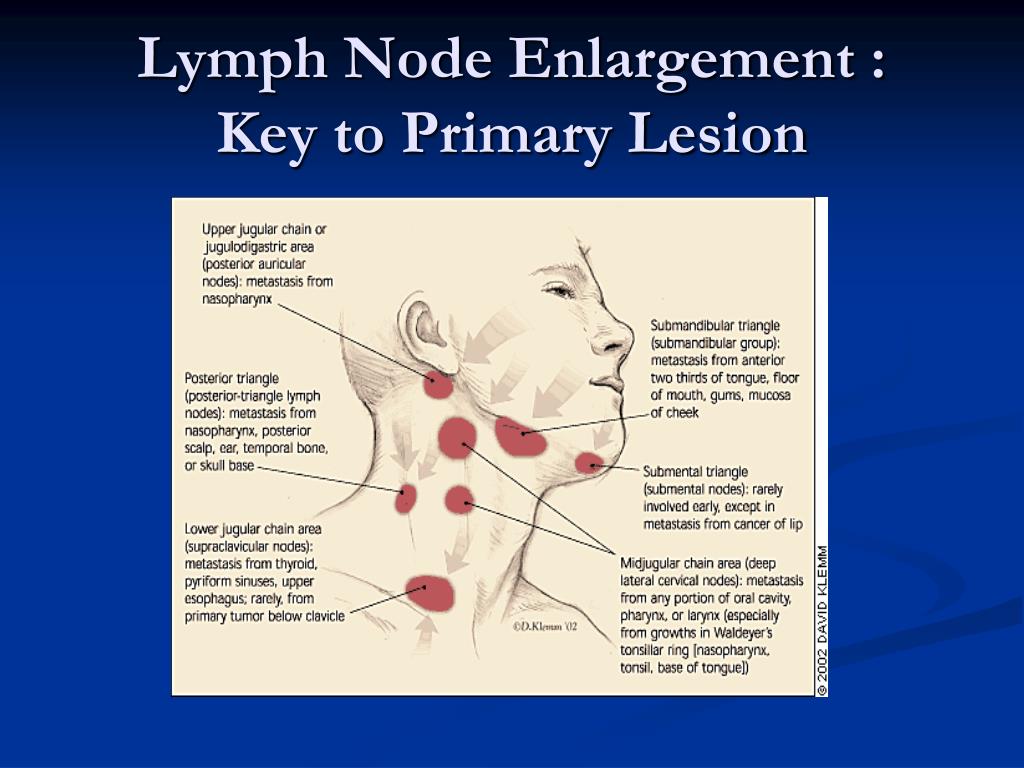
Follow Your Treatment Plan
If your doctor has prescribed a treatment plan, follow it closely. This may include taking medications as directed, attending follow-up appointments, or making lifestyle changes.
Manage Pain and Discomfort
In addition to any treatments recommended by your doctor, you can manage discomfort by:
- Using warm compresses or cold packs
- Wearing loose, comfortable clothing
- Practicing gentle stretches or exercises as recommended by your healthcare provider
Seek Emotional Support
Dealing with health issues can be stressful. Don’t hesitate to reach out for support from:
- Family and friends
- Support groups for people with similar conditions
- Mental health professionals if you’re experiencing anxiety or depression
Monitor Your Symptoms
Keep track of any changes in your symptoms and report them to your healthcare provider. This can help ensure that your treatment remains effective and that any new issues are addressed promptly.
Remember, while swollen lymph nodes in the armpit can be concerning, they are often a sign that your body is working hard to fight off an infection or heal an injury. By staying informed, following your treatment plan, and practicing good self-care, you can effectively manage this condition and support your overall health and well-being.

Swollen lymph nodes in armpit: Symptoms, causes, and treatment
Lymph nodes are part of the body’s immune system. A swollen lymph node in the armpit may be a sign of a bacterial or viral infection, an injury, or a serious health condition, such as cancer.
The possible causes of lymph node swelling range in severity from common infections that typically resolve on their own to more serious conditions, such as lymphoma.
In this article, we look at why lymph nodes swell, the most common causes of this symptom, and when to consult a doctor.
When a person has an infection or injury, the lymph nodes may swell as they start to filter unwanted cells from the lymph.
Lymph is a watery fluid that carries oxygen to the cells and transports waste products away from them. It also contains white blood cells, which help fight infections.
As the lymph nodes begin to work harder to remove waste, they can enlarge. This enlargement is more common in certain areas of the body, including the neck, armpits, and groin.
A swollen lymph node may be painful and tender to the touch. In some cases, it will be visibly enlarged under the skin, but in others, it will be smaller or deeper in the body and only apparent when touching the area.
Many viruses can cause swollen lymph nodes. These include:
- varicella-zoster virus, which causes chickenpox
- measles
- mumps
- rubella
- HIV
Infections with these viruses usually produce other visible symptoms, such as a rash.
However, other viral conditions can cause swollen lymph nodes with no other visible symptoms. These include:
Influenza (flu)
The flu is a respiratory infection that can also cause the lymph nodes to swell. The symptoms of the flu are similar to those of other respiratory viruses, but they tend to be more severe. They also often develop suddenly rather than gradually.
Other symptoms of the flu include:
- fatigue
- sore throat
- a cough
- runny or stuffy nose
- body aches
- headaches
- fever or chills
Vomiting and diarrhea can also occur, but these symptoms are more common in children.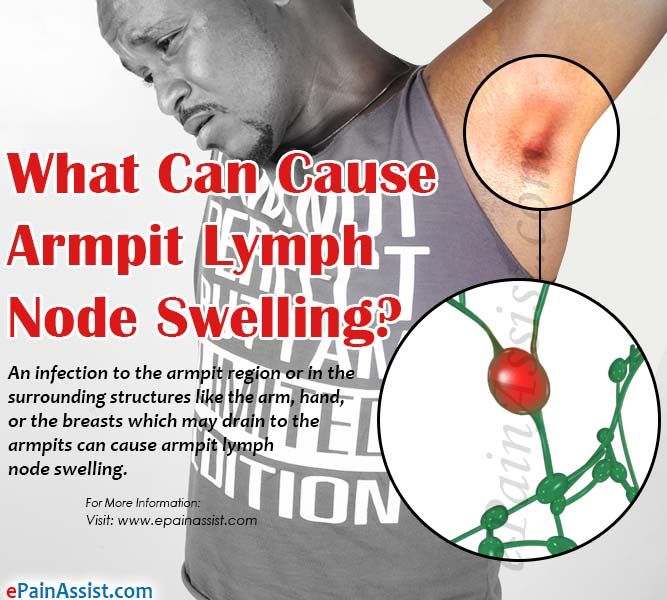
While a person has the flu, they should stay at home and rest, avoiding contact with others. Most people recover from the flu without treatment, but it can sometimes cause complications.
People who are most at risk of complications include:
- young children
- adults over 65 years of age
- pregnant people
- people with underlying health conditions
People in these groups may need antiviral medication to prevent severe symptoms. Getting a flu vaccine each year is the best way to avoid getting the flu.
Infectious mononucleosis
Infectious mononucleosis, also known as mono or glandular fever, is the result of a viral infection. It can cause lymph nodes in the neck and armpits to swell. Mono also causes symptoms such as:
- extreme fatigue
- fever
- swelling in the liver, spleen, or both
- sore throat
- body aches
- headaches
Mono will eventually go away on its own. Most people recover in 2–4 weeks, but some experience symptoms for longer. Resting, drinking fluids, and taking over-the-counter (OTC) pain relievers can help during recovery.
Resting, drinking fluids, and taking over-the-counter (OTC) pain relievers can help during recovery.
Bacterial infections can also cause the lymph nodes to swell. Some examples of infections that could affect the nodes in the armpit include:
Cellulitis
Cellulitis is a skin infection. It occurs when bacteria penetrate the skin and infect the deeper layers, potentially as a result of an injury that led to an area of broken skin.
Cellulitis may cause nearby lymph nodes to swell. For example, an infection in the arm may cause the lymph nodes in the armpit to enlarge. Common symptoms of cellulitis at the infection site include:
- pain and swelling
- skin sores
- skin that is warm to the touch
- redness, which may be less apparent in people with dark skin tones
- hardening of the skin
- fluid collection under the skin
Additional symptoms of cellulitis may include:
- fever or chills
- body aches
- muscle and joint pain
- vomiting and nausea
- fatigue
Doctors treat cellulitis with antibiotics. A person may need to stay in the hospital if the infection is severe or they require IV antibiotics, which a doctor administers directly into a vein.
A person may need to stay in the hospital if the infection is severe or they require IV antibiotics, which a doctor administers directly into a vein.
Lyme disease
Lyme disease spreads via the saliva of certain species of tick, which are small insects that can bite humans. One of the early symptoms of Lyme disease is swollen lymph nodes, which may appear 3–30 days after the tick bite occurred.
Other early symptoms include:
- a circular rash resembling a bull’s-eye at the site of the bite
- fever
- chills
- joint or muscle aches
- fatigue
- headaches
A doctor will typically prescribe antibiotics to treat Lyme disease. Anyone who suspects that they have this condition should seek medical attention promptly.
Other bacterial infections that can cause swollen lymph nodes include:
- chlamydia
- syphilis
- tuberculosis
However, these infections typically affect the lymph nodes in other areas of the body, such as the neck or groin. They are less likely to cause swelling in the armpits.
They are less likely to cause swelling in the armpits.
Bacteria and viruses are not always responsible for swollen lymph nodes in the armpit. Other possible causes include:
Rheumatoid arthritis
Rheumatoid arthritis (RA) is one of several autoimmune conditions that can cause swollen lymph nodes.
RA occurs when the body’s immune system mistakenly attacks the lining of the joints, causing stiffness, pain, and warmth.
A 2019 review article states that RA affects the lymph nodes, reducing their capacity to drain fluid from nearby inflamed joints. This impairment may lead to local lymph node enlargement.
Doctors treat RA with medications that reduce inflammation and relieve pain. Physical therapy may also help. In some cases, a doctor may recommend surgery to replace or repair affected joints.
Cancer
In some cases, swollen lymph nodes are a symptom of cancer.
Cancer that begins in the lymphatic system is known as lymphoma. There are several types of lymphoma, including:
- Hodgkin lymphoma
- non-Hodgkin lymphoma
- non-Hodgkin lymphoma in children
- Waldenström macroglobulinemia
- lymphoma of the skin
In addition to swollen lymph nodes, the symptoms of lymphoma can include:
- unintentional weight loss
- feeling tired
- fever
- night sweats
Other types of cancer that have spread to the lymph nodes, such as breast cancer, can also cause swelling in these parts of the body.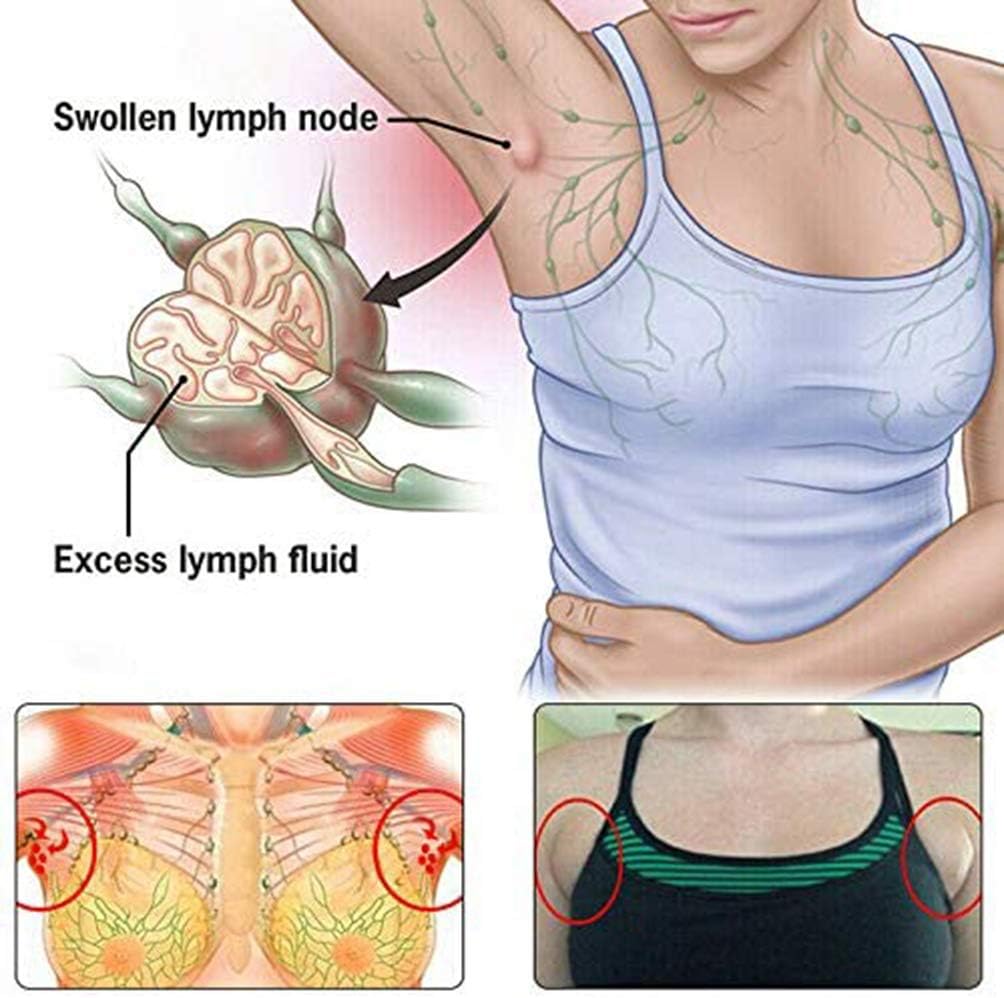
The type and stage of the cancer, as well as a person’s age and overall health, will affect what treatment doctors recommend.
However, it is worth remembering that there are many causes of swollen lymph nodes that are not related to cancer.
A doctor can determine the cause of swollen lymph nodes in the armpit and recommend the best treatment. They may ask about the person’s symptoms, review their medical history, and perform a physical examination.
In some cases, a doctor may also carry out diagnostic tests, such as blood tests, a biopsy, or medical imaging.
In most cases, the swelling in lymph nodes under the armpit will resolve within 1–2 weeks.
If the swelling lasts for longer or worsens over time, a person should speak with a doctor.
Swollen lymph nodes can be painful. While a person receives medical treatment, they can also try certain techniques at home to ease any tenderness.
For instance, a person can apply a warm compress to reduce pain.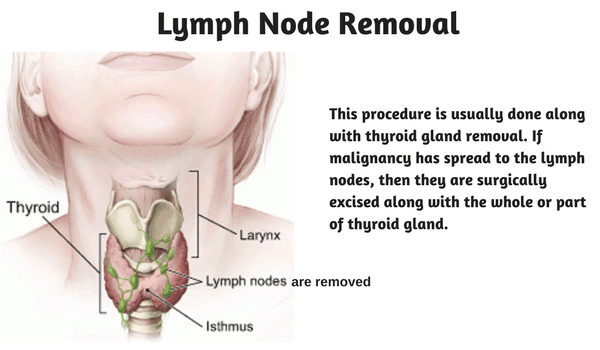 They can run warm or hot water over a washcloth and wring it mostly dry before placing it on the swollen lymph node.
They can run warm or hot water over a washcloth and wring it mostly dry before placing it on the swollen lymph node.
People can also take OTC pain medications, such as acetaminophen or ibuprofen, to relieve pain. A person should talk with their doctor if they are not sure what medications are best for them.
Anyone with swollen lymph nodes in their armpit should talk with a doctor. Swollen lymph nodes have many potential causes, and a doctor can rule out possibilities that require prompt treatment, such as Lyme disease.
Although swollen lymph nodes often result from an infection, it is important for a person to schedule an appointment if:
- the swelling continues for more than 2 weeks or worsens after this time
- the lump feels hard or does not move when a person touches it
- there is swelling in lymph nodes in more than one area — for example, in both the neck and armpits
- the swollen lymph nodes are not painful
- there are other symptoms, such as fever, night sweats, or unexplained weight loss
A person should also consult their doctor about swollen lymph nodes if they have previously had cancer treatment.
Swollen lymph nodes in the armpit can be a sign of common viral infections, such as the flu or mono. They can also occur as a result of a bacterial infection or RA. In some cases, swollen lymph nodes are a symptom of cancer.
Warm compresses and OTC pain medication can ease any pain or tenderness. However, a person should talk with a doctor if they have swollen lymph nodes with no clear cause.
Swollen Lymph Nodes in the Armpit: Pictures, Treatments, & More
Swollen lymph nodes in the armpit may indicate an infection, injury, or disease that requires medical attention. However, it’s usually not a sign of cancer.
Read on to learn what it means to have swollen lymph nodes in your armpit.
Lymph nodes are critical parts of the immune system. They filter foreign substances from the body and store white blood cells called lymphocytes. Lymphocytes fight disease and infections.
You have hundreds of small bean-shaped lymph nodes throughout the body, including in your:
- neck
- armpit
- chest
- abdomen
- groin
A lymph node in the armpit that’s only slightly enlarged may be difficult to see, but you may be able to feel it with your fingers. A serious infection or other condition may cause one or more nodes to swell enough that you can see a lump under your skin.
A serious infection or other condition may cause one or more nodes to swell enough that you can see a lump under your skin.
Keep in mind that the armpit contains many nodes, so swelling could occur in the front, center, or back of the armpit, as well as along part of the upper arm near the armpit.
In addition to being swollen, an affected lymph node may also be sore or tender to the touch.
Share on PinterestCT scan showing swollen lymph nodes in armpit.
Ahn, R. W., Mootz, A. R., Brewington, C. C., & Abbara, S.
Share on PinterestSwollen lymph nodes in the armpit due to infection.
Casa nayafana/Shuuterstock
Share on PinterestEnlarged lymph nodes in the armpit due to tuberculosis.
Zay Nyi Nyi/Shutterstock
To check for a swollen lymph node in the armpit, lift your arm slightly and gently place your fingers into your armpit. Press your fingers against the center of the armpit and then around the front and back of the armpit along the chest wall.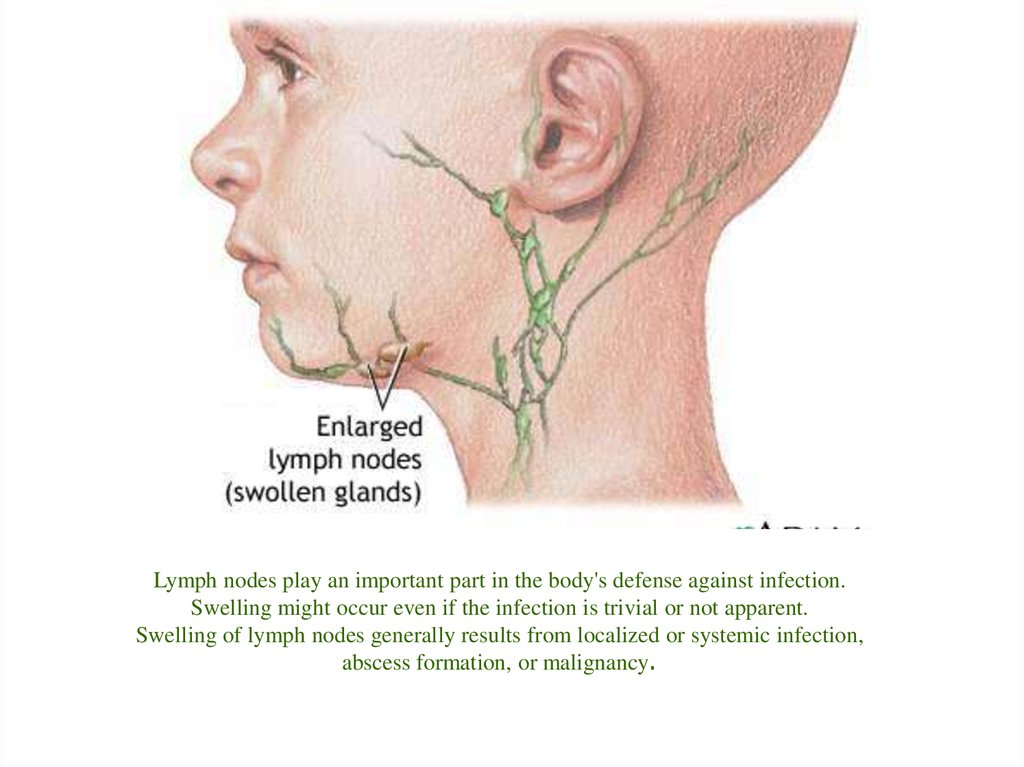 Do the same on the other side.
Do the same on the other side.
Lymph nodes exist in pairs on each side of the body, and typically only one node in a pair will be swollen. By comparing both sides, it may be a little easier to tell if one is enlarged.
If lymph nodes are swollen in more than one part of the body, the condition is known as generalized lymphadenopathy, which suggests a systemic illness. Localized lymphadenopathy refers to swollen lymph node(s) in one location.
The location of swollen lymph nodes usually suggests the cause of the problem. A swollen lymph node in the neck, for example, is often a sign of an upper respiratory infection.
When lymph nodes in the armpit become swollen, your body may be fighting a viral infection, or any of several other conditions. The potential causes of a swollen lymph node in the armpit can include:
Viral infection
Common viruses can trigger swelling in one or more lymph nodes in the armpit. They can include:
- flu
- common cold
- mononucleosis
More serious viral infections that may cause lymph node enlargement include herpes, rubella, and HIV.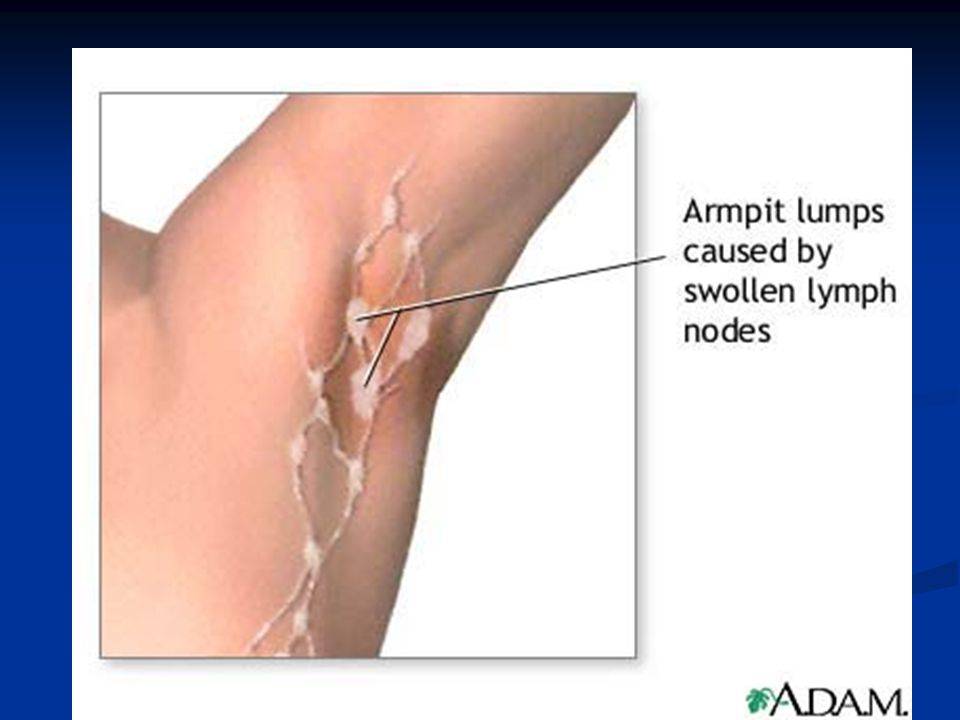
These viruses may also cause lymph nodes in the neck to become enlarged, too. In many cases, rest, fluids, and time are all that you can do while your immune system fights off the virus. For certain viral infections, like HIV, antiviral medications may be necessary.
Bacterial infection
Some common bacterial infections on the arm or surrounding chest wall, including staphylococcus and streptococcus, can lead to an enlarged lymph node in the armpit and elsewhere in the body. Antibiotics and rest are usually enough to overcome a bacterial infection.
Immune system disorder
Flare-ups of autoimmune disorders, like lupus and rheumatoid arthritis, can cause temporary enlargement of the lymph nodes in an armpit. Treatments vary, depending on the cause, but anti-inflammatory medications, pain relievers, and in serious cases, immunosuppressant drugs may be necessary.
Cancer
Certain types of cancer directly involve the lymphatic system.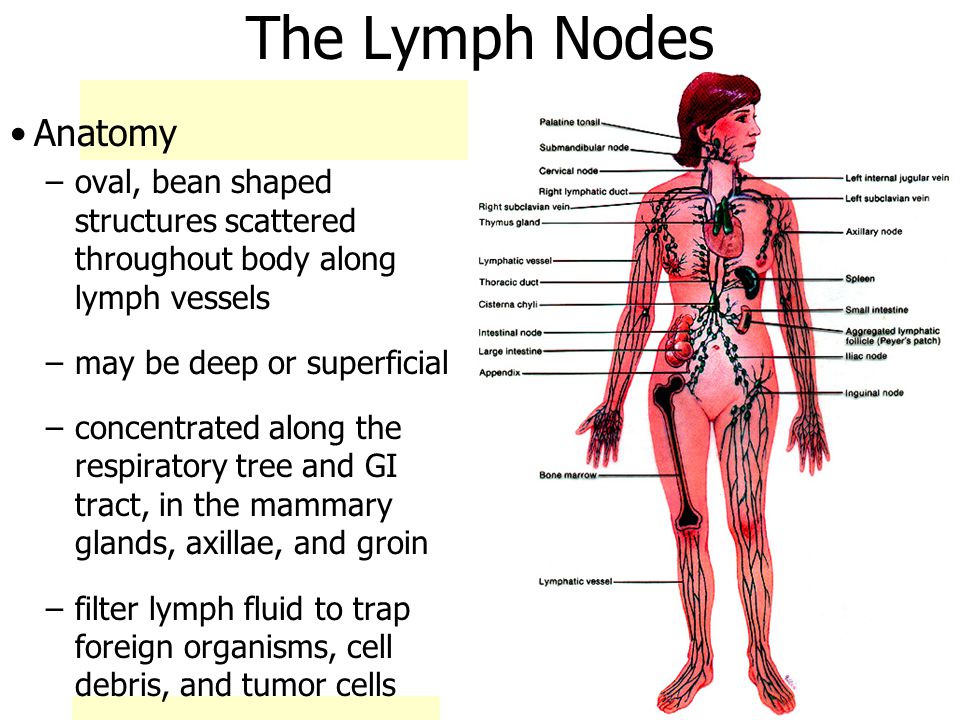 Lymphoma actually originates in the lymph glands. Leukemia, a cancer of the blood cells, can cause inflammation and swelling of the lymph nodes.
Lymphoma actually originates in the lymph glands. Leukemia, a cancer of the blood cells, can cause inflammation and swelling of the lymph nodes.
Cancers that form in other organs or tissue may spread to the lymphatic system. Breast cancer, for example, can cause swelling of the lymph nodes in the armpit.
An enlarged lymph node near a cancerous tumor is often suspected of also being cancerous. Cancer treatments vary and may include chemotherapy, radiation therapy, surgery, and other approaches.
Medications
In rare cases, certain medications can cause lymph nodes to swell. Among them are:
- ACE inhibitors, beta blockers, and vasodilators to treat high blood pressure
- anticonvulsant drugs, including phenytoin and primidone
- anti-malarial drugs, including quinidine
- uric acid reducers, like allopurinol
Switching medications or adjusting doses may be enough to reduce side effects like lymph node enlargement.
As your body starts to successfully fight off the infection, the swelling in your lymph nodes should start to diminish.
With a typical bacterial infection, for example, a course of antibiotics should start to relieve lymph node swelling and other symptoms within a few days. A stubborn viral infection could take longer.
If your other symptoms are subsiding, but your lymph nodes remain swollen, tell a health professional. You may need additional treatment or a follow-up exam to see if there are other reasons your lymph nodes are still enlarged.
Because swollen lymph nodes are more often signs of an infection, rather than cancer, you may be inclined to dismiss swelling as a temporary symptom that’ll subside as you get over your infection. In many cases, that’s exactly what will happen.
If you’re unsure whether to seek a medical evaluation for swollen lymph nodes, these signs may be reasons to see a medical professional:
- One or more lymph nodes are swollen for no obvious reason.
- The swelling has lasted or gotten worse over a period of 2 or more weeks.
- The affected node feels hard and immovable when you press on it.

- The swollen lymph nodes aren’t painful.
- You have swollen lymph nodes in separate areas, like the armpit and groin.
- You have other symptoms, like:
- redness or fluid oozing around the node
- fever
- cough
- night sweats
- unexplained weight loss
- pain elsewhere in your body
Swollen lymph nodes typically get better once your illness has been treated or goes away on its own. To support your immune system as it responds to the infection or illness, you can rest and drink plenty of fluids. If you are prescribed medication, be sure to take it according to the prescribing doctor’s instructions.
If you feel discomfort or pain due to your swollen lymph node, you can try applying a warm compress to ease discomfort. Over-the-counter (OTC) pain medication, such as acetaminophen (Tylenol), may also help reduce pain.
If your pain gets worse or does not resolve, you may need to consult a doctor for additional treatment or testing.
Most of the time, a swollen lymph node means your body’s immune system is doing its job in responding to an infection or other health problem. That also means you’re dealing with an illness or injury that may require treatment.
If you’re battling a cold, for instance, and you notice slight swelling of a lymph node in your armpit, pay attention to it for a few days and see if the swelling goes down when you start feeling better.
Unexplained swelling or the presence of other serious symptoms should prompt a visit with a health professional for a more complete evaluation.
Inflammation of the lymph node under the arm – what to do?
Inflammation of the lymph node under the arm is a sign that almost immediately makes itself felt. The fact is that the inflammatory reaction is accompanied by significant swelling, so even with a slight touch, the inflamed lymph nodes under the arm will hurt. As a rule, axillary lymphadenitis most often occurs after a respiratory illness.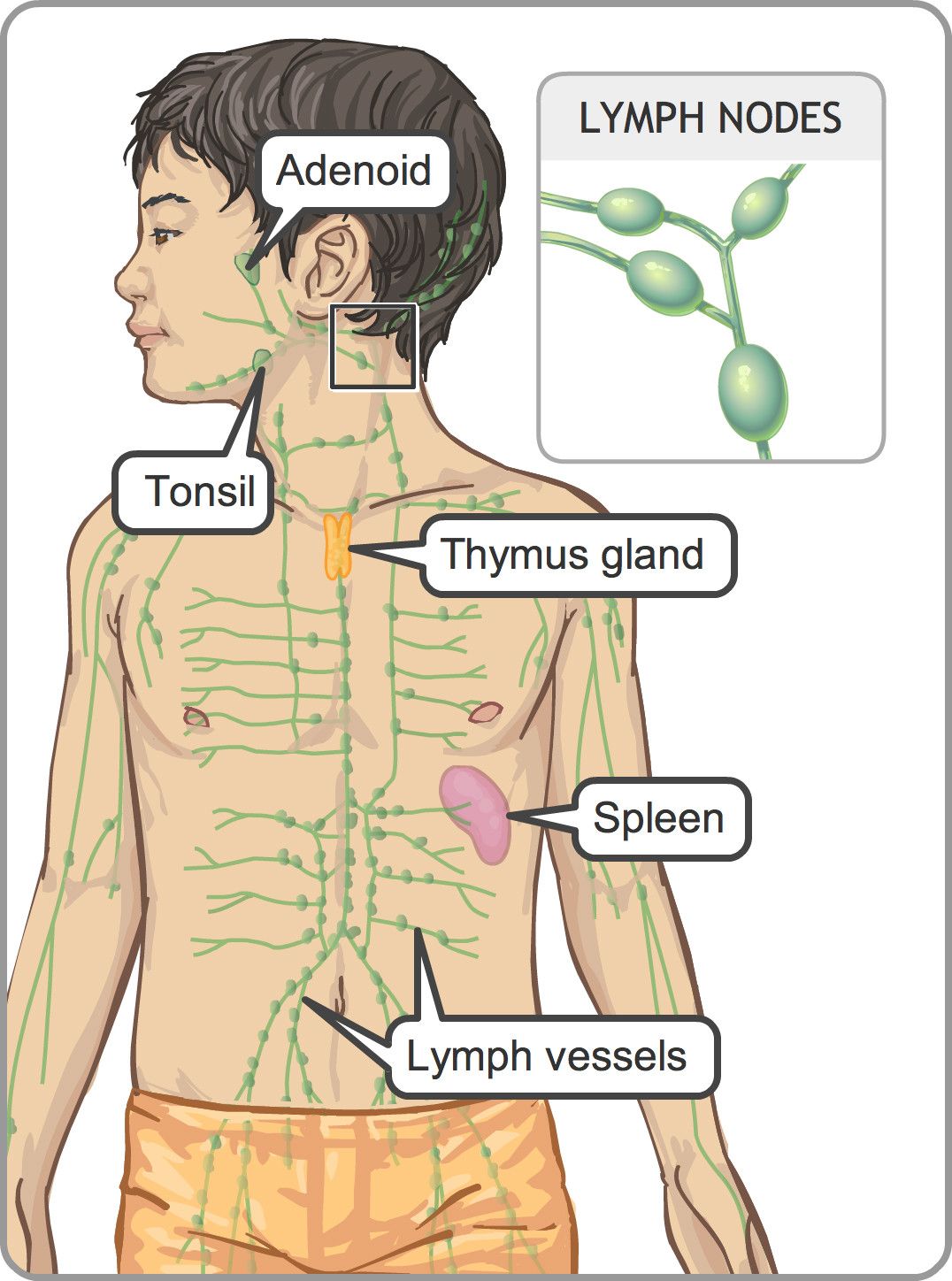 Therefore, if such a complication occurs, it is necessary to seek help from a qualified specialist as soon as possible.
Therefore, if such a complication occurs, it is necessary to seek help from a qualified specialist as soon as possible.
Why do the lymph nodes under the armpits become inflamed?
Inflammation of the lymph nodes is called lymphadentitis. Most often, the lymph nodes become inflamed due to staphylococci, streptococci and E. coli. If too many bacteria accumulate in the body, and the lymphatic system can no longer cope with them, its nodes accumulate pathogens and become inflamed.
Axillary lymph nodes become inflamed due to a variety of reasons. For example, with a disease of the mammary glands, during a cold, infectious or oncological diseases. Furunculosis, increased work of the sweat glands, colds and respiratory diseases, allergies, and intoxications can also be factors.
Sometimes one lymph node becomes inflamed, sometimes lymph nodes all over the body become inflamed. Sometimes they increase so much that they become sensitive and painful. Those that appear in the armpits ache, blush and swell. Inflammation can be accompanied by weakness in the body, nausea, vomiting, drowsiness and headache.
Inflammation can be accompanied by weakness in the body, nausea, vomiting, drowsiness and headache.
Symptoms of axillary lymphadenitis
The inflammatory process in the regional axillary lymph nodes has an isolated character and is usually characterized by a catarrhal or purulent course. Below are the most common clinical pictures of inflammation of the axillary lymph nodes.
- Acute catarrhal form. This inflammatory process is more common than others and often occurs in a mild form. It is characterized by severe pain, enlargement of the lymph nodes and their compaction. With catarrhal inflammation, the lymph nodes are easily separated and do not lose their mobility. In the axillary region, hyperemia and mild swelling may develop. The patient may report deterioration, discomfort during shoulder abduction, and mild subfebrile condition.
- Purulent form. This type of inflammatory process is the most dangerous due to the formation of a purulent focus, which can be represented by single or multiple abscesses.
 The lymph node itself loses its mobility and becomes painful and swollen. Nearby tissues are sharply hyperemic, may be subject to alteration or melting. Possible soldering of the lymph nodes with the skin.
The lymph node itself loses its mobility and becomes painful and swollen. Nearby tissues are sharply hyperemic, may be subject to alteration or melting. Possible soldering of the lymph nodes with the skin. - Chronic course of lymphadenitis. Quite often there are sluggish inflammatory processes, in which the lymph node under the arm becomes inflamed when the immune system is weakened and the body’s resistance to various infectious agents is reduced. Symptoms in this form are mild, the lymph nodes are mobile, but there is a slight soreness.
Treatment of lymph nodes
Treatment of lymphadenopathy of the axillary lymph nodes consists in the selection of the correct etiotropic and pathogenetic therapy. The main thing is to remember that patients are strictly forbidden to attempt to independently eliminate such a manifestation of the inflammatory reaction.
As a rule, all treatment is based on the elimination of the inflammatory focus, which caused the development of axillary lymphadenitis. Often, a course of antibiotic therapy or a number of anti-inflammatory drugs is prescribed for this. In addition, it is advisable to use compresses with Dimexide, immunomodulatory drugs and a course of physiotherapy procedures, which will contribute to the overall strengthening of the body.
Often, a course of antibiotic therapy or a number of anti-inflammatory drugs is prescribed for this. In addition, it is advisable to use compresses with Dimexide, immunomodulatory drugs and a course of physiotherapy procedures, which will contribute to the overall strengthening of the body.
With the development of a malignant process with concomitant lymphadenitis, the patient is indicated for a course of chemotherapy or surgical treatment.
You might be interested
Armpit enlargement, causes and treatment
home
Symptoms
Enlargement of the lymph nodes in the armpits
Enlargement of the lymph nodes under the armpits is a symptom of the lymphatic system, occurs in response to local and pathological processes in the body, and is characterized by an increase, induration, and soreness of the lymph nodes. An increase in the lymph nodes of the armpit of any nature is called axillary lymphadenopathy. Accompanies immune and inflammatory diseases, infections, tumor lesions.
Share:
Causes of swollen lymph nodes under the armpits
Swollen lymph nodes under the arms is a common sign of axillary lymphadenitis. The disease develops subject to the presence in the body of a primary acute or chronic focus of inflammation. Infection with the flow of lymph, blood or contact spreads in the body, affects the organs of the lymphatic system. Inflammation of the lymph nodes – a pre-morbid condition or a symptom of diseases such as:
- acute respiratory viral infections;
- inflammatory processes of ENT organs: tonsillitis, sinusitis, sinusitis, otitis media;
- infections of the skin and mucous membranes: purulent wounds, stomatitis, actinomycosis, boils, eczema;
- bacteria, viral infections: diphtheria, mumps, scarlet fever, varicella;
- dental diseases: pulpitis, caries, osteomyelitis;
- venereal pathologies: syphilis, gonorrhea.
Among other reasons why enlarged lymph nodes in the armpit area, the following diseases and pathological conditions are considered:
- dysfunction of the endocrine glands;
- blood diseases;
- malignant and benign tumors of lymphoid tissue;
- axillary metastases;
- female breast cancer;
- contusion in the armpit, chest;
- diseases of the immune system: dermatomyositis, rheumatoid arthritis, systemic lupus erythematosus;
- drug reaction;
- chronic diseases of the digestive system.

Article checked
Konovalova G. N.
Neurologist • 44 years of experience
Publication date: March 24, 2021
Review date: January 20, 2023
Article content
Types of armpit enlargement
Quote from CMRT specialist
Ulyanova Daria Gennadievna
Neurologist • Chiropractor • Experience 24 years
Quote from CMRT specialist
Swollen armpit lymph nodes can be associated with inflammatory or infectious processes, as well as the development of other serious diseases, therefore, it requires an urgent visit to the doctor. It is important to take into account the accompanying symptoms and conduct an up-to-date diagnosis, which will allow an accurate diagnosis.
Ulyanova Daria Gennadievna
Neurologist • Chiropractor • Experience 24 years
Methods of diagnosis
If the axillary lymph nodes are enlarged, it is necessary to contact a lymphologist or phlebologist, or a therapist can be used to establish the underlying disease, the causes of its development. In some cases, you may need to consult an endocrinologist, an infectious disease specialist, an oncologist, a pulmonologist, a mammologist, or a specialist in another field.
In some cases, you may need to consult an endocrinologist, an infectious disease specialist, an oncologist, a pulmonologist, a mammologist, or a specialist in another field.
The doctor conducts an external examination, during which he assesses the condition of the skin, size, density, cohesion, clarity of the borders of the lymph nodes in the armpits, the severity of pain on palpation.
According to the indications, the diagnostic plan includes diverse examinations:
- laboratory tests: blood and urine tests, biochemical blood tests, bacteriological culture of the material, tuberculin test, diagnostic puncture, biopsy of the lymph nodes;
- equipment: chest X-ray, ultrasound scan of the lymph nodes of the armpit, mammography, computed tomography of the abdominal cavity.
Specialists of the CMRT clinics, in order to identify the causes of enlarged lymph nodes in the armpits, prescribe the following studies:
Which doctor to contact
Primary diagnosis of the reason why the lymph nodes in the armpits are enlarged is carried out by a therapist.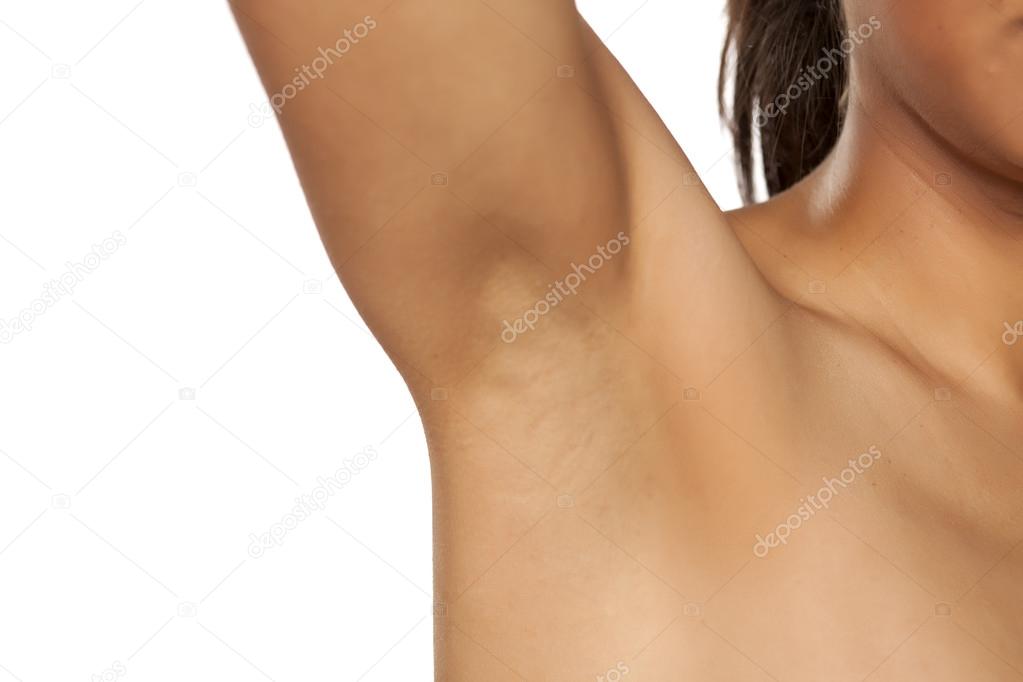 After the diagnosis, he will either prescribe treatment or refer you to a surgeon, mammologist or other doctor with a narrower specialization.
After the diagnosis, he will either prescribe treatment or refer you to a surgeon, mammologist or other doctor with a narrower specialization.
Treatment of enlarged axillary lymph nodes
The course of treatment is selected in the case of a particular patient, and depends on the diagnosis. In the early stages and in the non-tumor nature of enlarged lymph nodes, conservative therapy is recommended. To stop infectious and inflammatory processes, to destroy the primary focus of infection, antibacterial drugs are prescribed in accordance with the type of pathogen. Non-steroidal anti-inflammatory drugs, analgesics help to get rid of pain and inflammation, normalize body temperature. Thermal procedures, compresses with Vishnevsky’s ointment, immunostimulants, vitamins are shown.
In case of a purulent form of lymphadenopathy of the axillary lymph nodes, the patient is hospitalized, the purulent focus is opened, followed by drainage and antiseptics. In the presence of indications and tumor forms, surgical removal of enlarged lymph nodes is indicated.
In the presence of indications and tumor forms, surgical removal of enlarged lymph nodes is indicated.
In CMRT clinics, to treat the causes of enlarged lymph nodes in the armpits, conservative therapy and surgical treatment are used:
Consequences
Prevention of swollen lymph nodes under the arms
Article checked
Moskaleva V.V.
Editor • Journalist • Experience 10 years
We publish only verified information
The materials posted on the site are written by authors with medical education and specialists from the CMRT company
Read more
Did you like the article?
Subscribe so you don’t miss the next one and get a unique gift from CMDT.
By clicking on the button, I accept the agreement for the processing of my data.
round-the-clock appointment by ph.
+7 (812) 748-59-05
Sign up for CMRT
Need a preliminary consultation? Leave your details, we will call you back and answer all
questions
The information on the site is for guidance only, please consult your doctor
Your application has been sent,
our operator will call you back
Callback request
Your name
Phone
By clicking on the button, I accept the agreement for the processing of my data
Enroll
Your name
Phone
By clicking on the button, I accept the agreement for the processing of my data
Ask a question to a specialist
Your name
telephone
Your question
Send a reply to e-mail
Publish anonymously
By clicking on the button, I accept the agreement for the processing of my data.

:max_bytes(150000):strip_icc()/armpitpainfinal-01-5c86a51446e0fb000133653f.png)
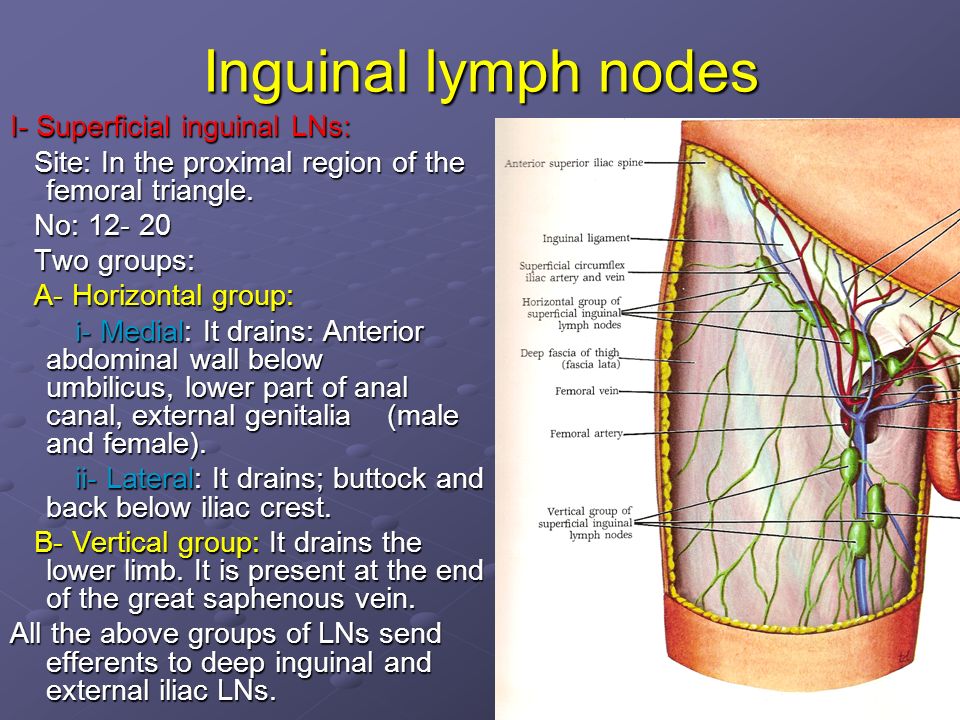 The lymph node itself loses its mobility and becomes painful and swollen. Nearby tissues are sharply hyperemic, may be subject to alteration or melting. Possible soldering of the lymph nodes with the skin.
The lymph node itself loses its mobility and becomes painful and swollen. Nearby tissues are sharply hyperemic, may be subject to alteration or melting. Possible soldering of the lymph nodes with the skin.